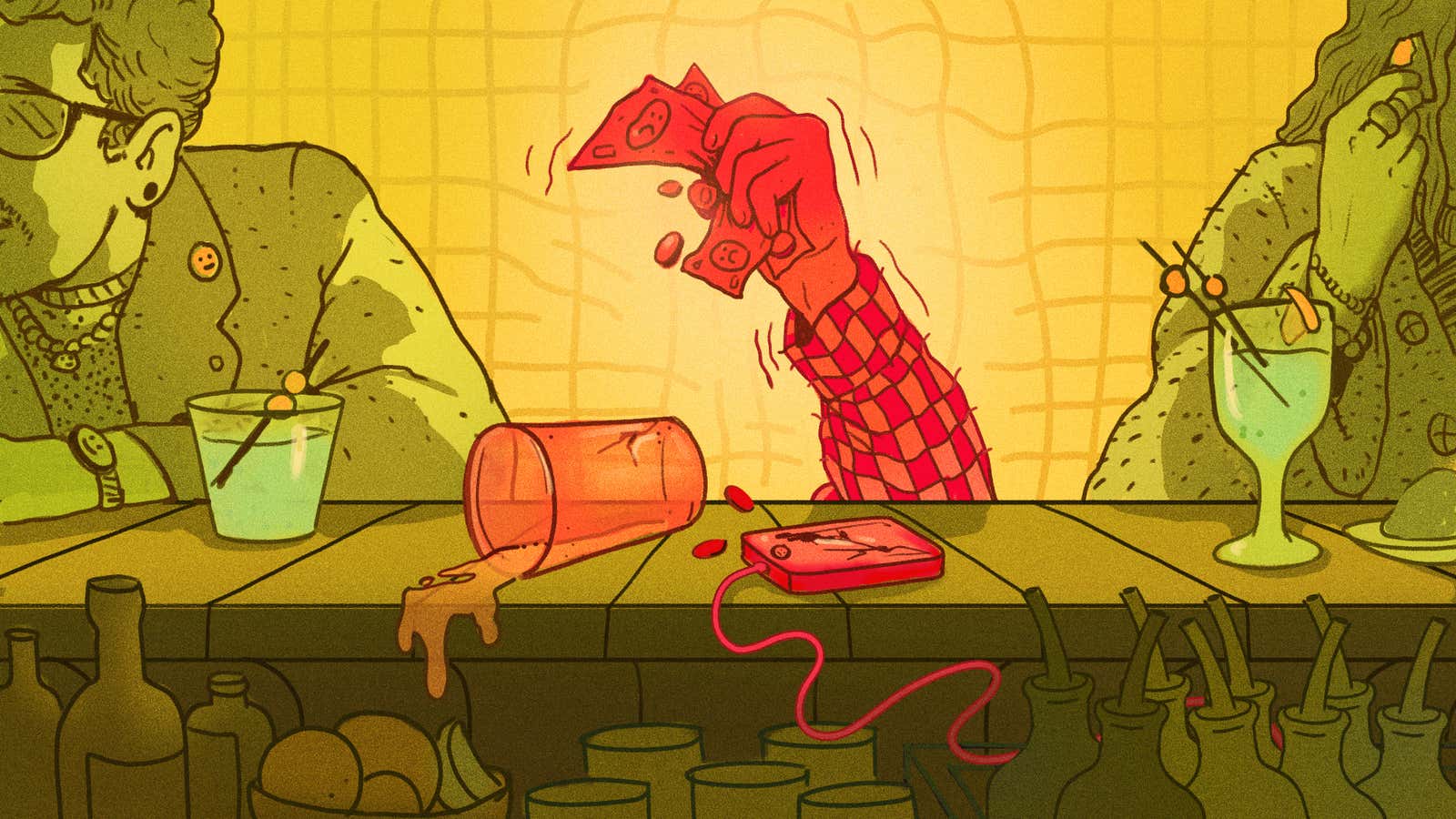We’ve all seen that one person at a bar or restaurant who’s had more than enough to drink. They’re either slurring their words, teetering and shouting, or simply have their head down on the end of the bar. Distributing alcohol in a drinking establishment can be a tricky line to walk, since the very product from which the business profits can be the one that causes the most problems. So, how does a server or bartender make the call to cut someone off? Which signs indicate that a patron has had too much?
Bartenders are trained and certified professionals
In Illinois, those who serve alcohol are required to complete a BASSET certification program. BASSET stands for “Beverage Alcohol Sellers and Servers Education and Training,” and it sets the guidelines on how alcohol should be served in a drinking establishment. You can’t be hired as a server or a bartender without this certification.
I asked multiple people in the service industry what it was they looked for when it was time to cut someone off, and every single person said their BASSET training was their touchstone when making this decision. I even reached out to the Illinois Liquor Control Commission, which pointed me to a training site, BASSET Illinois. So I decided to put down a few bucks and take the online certification course myself, so I could see just how service industry professionals decide if someone has overdone it with the booze.
What servers need to know before they sell alcohol
BASSET training is broken down into multiple video tutorials, one of which details how alcohol physically affects a person. I wasn’t expecting that much science, but the course provides details on what happens when alcohol enters the body, and how various levels of blood alcohol content can influence someone’s behavior.
While I was already aware that Illinois’ legal blood alcohol concentration limit was 0.08% (meaning there’s 0.08 grams of alcohol for every 100 milliliters of blood in your body), I didn’t realize how little booze it can take some people to reach that limit. In fact, the BASSET training indicates that 0.08% is right around the point where most people start feel a slight buzz after they begin drinking. For me, it doesn’t take much at all to get to that point; after one stiff drink I’ll already be physically feeling the effects of alcohol without seeming drunk, but that buzz is an indicator that I would be considered legally drunk behind the wheel of a vehicle.
Other topics covered include: whether coffee can really sober people up (it can’t), whether you can legally deny a pregnant woman alcohol (you can’t), and how to spot someone who might be an alcoholic (the signs can be subtle).
Bartenders’ delicate tactics for cutting someone off
Now, it probably seems pretty obvious that a customer has had too much to drink due to physical cues, but broaching that subject with the customer can be difficult. Once you see that they’re slurring their words or having trouble with their motor skills (or even sleeping), that’s a pretty good indicator they shouldn’t have any more. This part isn’t particularly fun for servers.
BASSET training suggests you don’t directly tell customers that they’re wasted, because that can agitate the person and get them arguing with you. Instead, the course advises that servers use a redirection tactic by saying something in the first person. Example: “I can’t serve you any more,” which puts the onus on the server and not on the customer. But the training course also stresses that you should be kind when letting the customer know that they’ve had too much. If things get out of hand, a manager needs to get involved.
Do people pay their bar tab when they get kicked out?
Say someone’s tossed out before they settle up their tab. Do they end up paying at all? I asked an industry insider.
“99.9% of the time, the guest pays their tab,” my source explained. “Even an inebriated guest can understand that they came into an establishment to consume alcohol in exchange for payment.” So usually, non-payment isn’t an issue when it comes to someone who’s been overserved.
Overserving can be a huge liability issue
It’s in the interest of the bar to keep patrons from drinking way too much, because the business can be liable for the fallout. If a customer has had too much to drink and then hops into their vehicle and drives away, as a server or a bar manager, you can get into a shitload of trouble. And this goes without saying, but nobody wants a customer to hurt themselves or others while sloshed. But when something bad happens after a drunk customer leaves the restaurant or bar, does insurance cover it?
“Dram shop insurance” is a type of liability insurance for stores that serve alcohol meant to be consumed on-premises. The name “dram” comes from the fact that alcohol used to be sold by the dram, which is one-eighth of an ounce. While this insurance is meant to protect establishments from the costs of defending themselves from drinking-related lawsuits, it can’t cover you if you knowingly served a minor or kept serving someone who exhibited signs of drunkenness.
We all know that service industry is a lot of work. It can be hard enough dealing with customers at the best of times, but add alcohol to the mix and things can get infinitely more difficult. Pair that with the added responsibility of being liable for their actions, and suddenly the need for something like a BASSET certification becomes pretty clear. No customer service jobs is easy, but dealing with a customer who’s agitated and inebriated can land you in some pretty sticky situations. With the proper training, a server knows how to handle them.
